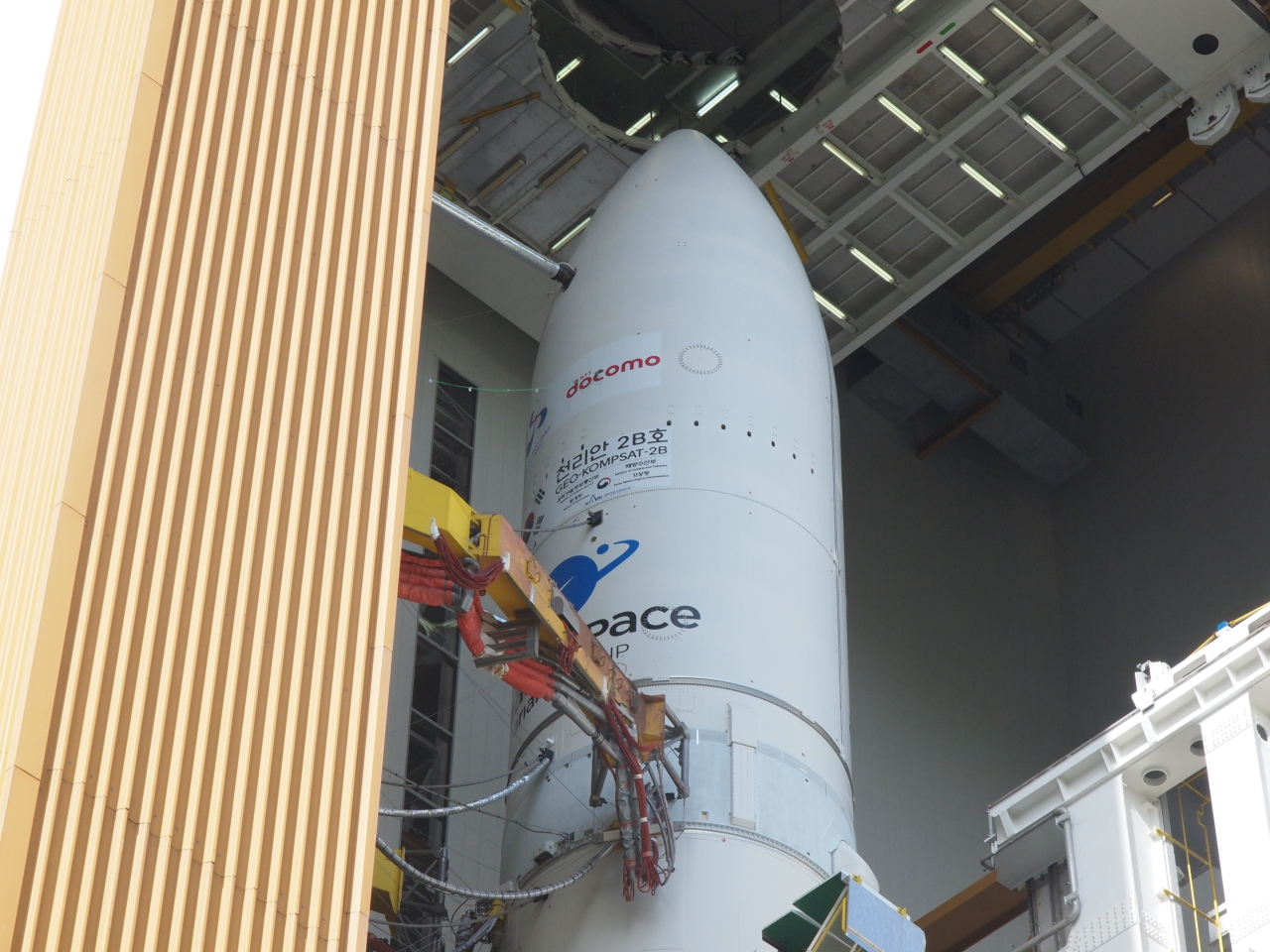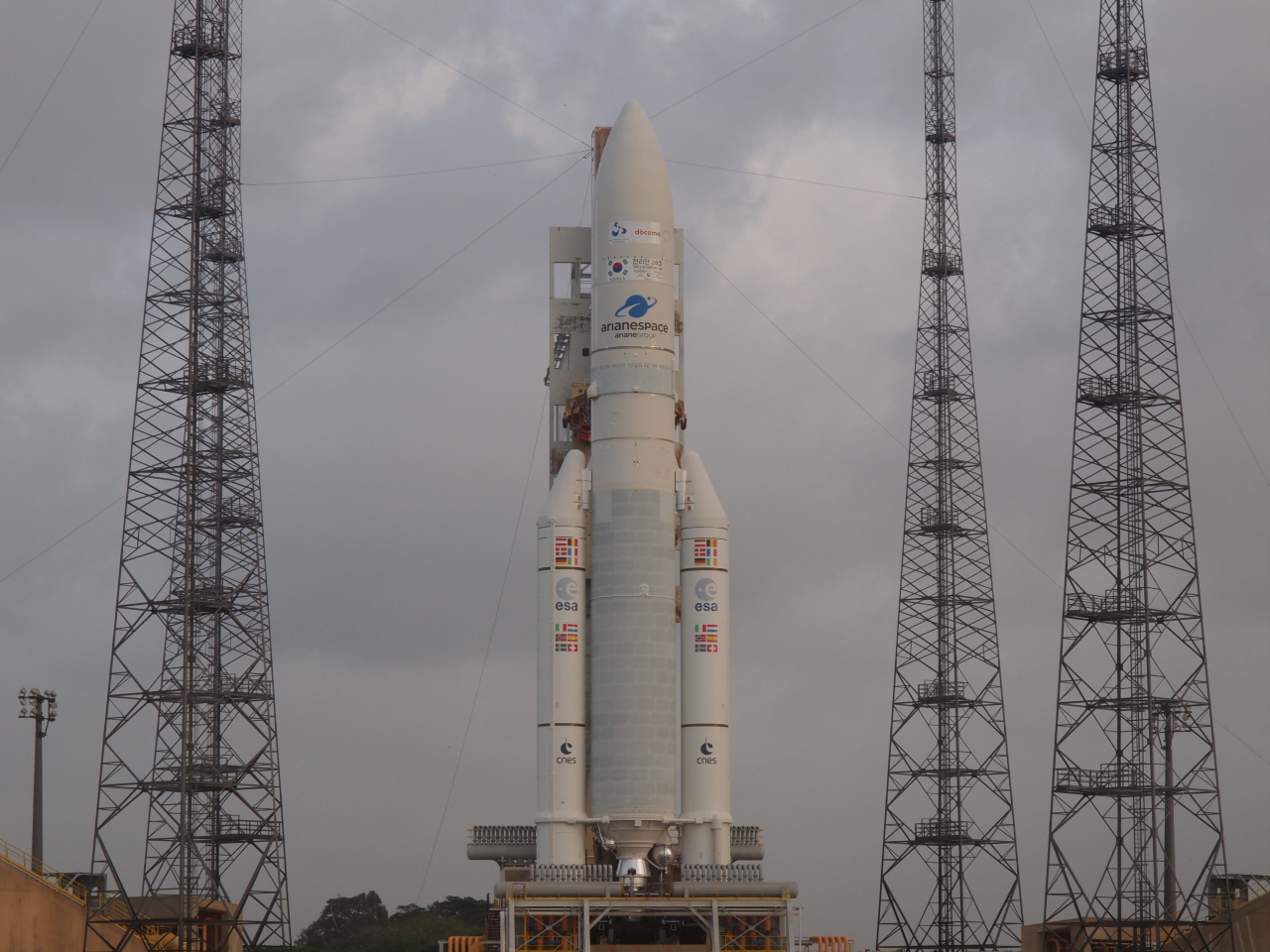South Korea’s environment-monitoring satellite Chollian 2B awaits countdown
By Shim Woo-hyunPublished : Feb. 18, 2020 - 15:01

South Korea’s environment-monitoring satellite Chollian 2B will lift off Wednesday morning as scheduled, the government-led aerospace project team said Tuesday.
The Chollian 2B, a twin satellite of the Chollian 2A launched in 2018, is the world’s first geostationary satellite to be used in observing air conditions from 36,000 kilometers above the Earth’s equator.
“The only thing that is left at the current moment is the countdown,” said Choi Jae-dong, director of the Korea Aerospace Research Institute’s satellite program.
The satellite has gone through all checks required before its launch, announced KARI. It arrived at the space center in Kourou, French Guiana, South America, on Jan. 6 and went through two to three weeks of inspection.

The satellite is equipped on the Ariane 5 ECA rocket, a type of launch vehicle that has carried out 70 successful missions to date. The Chollian 2A was also launched on this rocket.
Upon the launch, the aerospace team will make first contact with the satellite after it becomes detached from the rocket. The satellite will then unfurl its solar panel about an hour after the initial launch. If the satellite successfully deploys its solar panel, it will start to adjust itself in orbit and settle on a stationary track of 36,000 km above Earth, according to the Ministry of Science and ICT.
If safely deployed, the Chollian 2B will start sending real-time data on marine conditions from October this year and atmospheric information starting in 2021. The Chollian 2A, in the meantime, will send terrestrial and weather information during its lifespan.
The twin satellites’ life expectancies are about 10 years, according to the ICT Ministry.
The multi-ministry project began in 2011 with an initial budget of 669.7 billion won ($563.1 million). The total budget later increased to 704.7 billion won during the development.
By Shim Woo-hyun (ws@heraldcorp.com)



















![[Today’s K-pop] BTS pop-up event to come to Seoul](http://res.heraldm.com/phpwas/restmb_idxmake.php?idx=642&simg=/content/image/2024/04/17/20240417050734_0.jpg&u=)